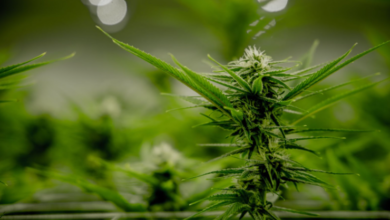What Is Cbd

Cannabidiol (CBD) is a non-psychoactive compound from the cannabis plant, differing significantly from THC, which causes intoxication. It primarily interacts with the endocannabinoid system, influencing various physiological processes. Research indicates potential benefits in managing conditions like anxiety and chronic pain. As interest in CBD grows, various product forms have emerged. Understanding how CBD works and its applications can provide insight into its increasing popularity and potential therapeutic uses.
Understanding Cannabidiol (CBD)
Cannabidiol, commonly referred to as CBD, is a phytocannabinoid derived from the cannabis plant.
CBD legality varies across jurisdictions, leading to widespread cbd misconceptions regarding its use.
Unlike its psychoactive counterpart THC, CBD does not induce a high, which contributes to its appeal.
Understanding these aspects empowers individuals to navigate the evolving landscape of CBD, ensuring informed choices regarding its potential benefits and legal status.
How CBD Interacts With the Body
When introduced into the body, CBD interacts primarily with the endocannabinoid system (ECS), which plays a crucial role in maintaining homeostasis.
It binds to cannabinoid receptors, particularly CB1 and CB2, influencing various physiological processes.
This interaction can modulate pain, inflammation, and mood, highlighting the ECS's significance in overall health and wellness, while promoting the body's innate ability to achieve balance.
Potential Benefits of CBD
Although research is still ongoing, numerous potential benefits of CBD have emerged, suggesting its therapeutic applications across various conditions. These include relief from anxiety, inflammation, and chronic pain.
As CBD legality varies by region, individuals should confirm local regulations. Additionally, determining the appropriate CBD dosage is crucial for maximizing benefits while minimizing side effects, ensuring a safe and effective experience for users.
Different Forms of CBD Products
As interest in the potential benefits of CBD continues to grow, so does the variety of available products on the market.
Consumers can choose from oil tinctures, which allow for precise dosing and rapid absorption, or edible gummies, offering a convenient and enjoyable method for ingestion.
These diverse forms cater to individual preferences, enhancing accessibility and promoting the exploration of CBD's potential therapeutic effects.
Conclusion
In summary, cannabidiol (CBD) emerges as a promising compound in the realm of wellness, engaging with the body's endocannabinoid system to promote balance. Its diverse forms offer accessibility for individuals seeking relief from various ailments. With ongoing research elucidating its potential benefits, one must consider: could CBD be the key to enhancing holistic health? As understanding deepens, the role of CBD in therapeutic applications continues to evolve, warranting further exploration and awareness.






